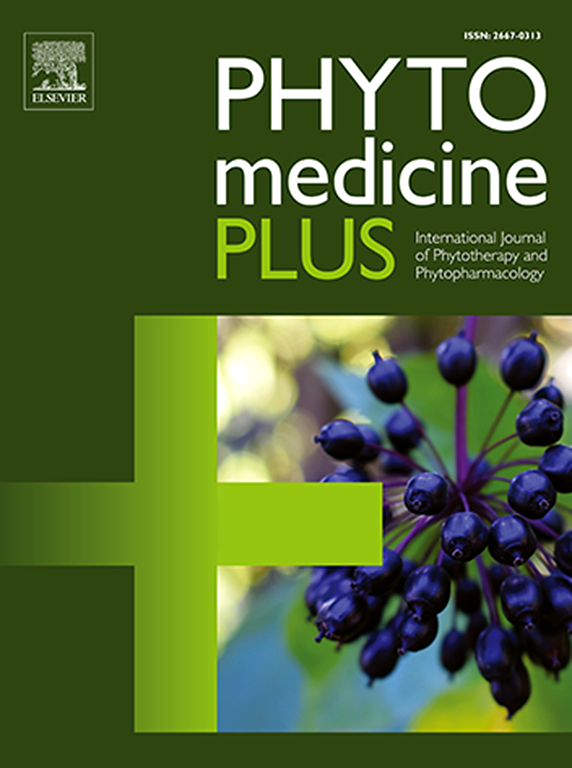穿心莲(Andrographis paniculata, Burm.f.)穿心莲内酯分子机制及药理研究进展2型糖尿病与乳腺癌相互作用的管理需要
Q3 Pharmacology, Toxicology and Pharmaceutics
引用次数: 0
摘要
背景穿心莲(缅甸)Nees是一种起源于刺科的草本植物,该植物广泛分布于亚热带地区,在中国俗称川新莲,在印度次大陆俗称卡尔梅。甲草已演变成大量的中成药,在临床环境中经常使用;它最初被记载在岭南草药录中,旁边是480种中草药的完整清单。材料与方法本文回顾了与2型糖尿病(T2D)、乳腺癌和金银花相关的文献。为了将三者联系起来并找到一个链接,我们在TCM Bank, TCMSP, PubMed,谷歌Scholar, ResearchGate, Embase和ScienceDirect上进行了全面的文献检索,关键词是传心莲,中药,穿心莲内酯,乳腺癌和糖尿病。结果糖尿病与癌症之间的分子机制早已被推测,但仍不清楚。这两种疾病都造成了世界范围内的死亡率,如果不解决它们之间的因果关系,就可能导致全球健康危机。因此,副作用较小的天然来源的补充/替代药物在穿心莲中越来越受欢迎。Nees是一种常见的亚洲草药,被用来治疗几种疾病,包括糖尿病和乳腺癌。结论综上所述,本文强调了金针叶作为一种传统中药的重要性,其在治疗多种疾病方面显示出良好的疗效,为今后的研究提供了有价值的方向。本文章由计算机程序翻译,如有差异,请以英文原文为准。

A review on the molecular mechanisms and pharmacology of andrographolide from Andrographis paniculata (Burm.f.) Nees in the management of the interplay between type 2 diabetes and breast cancer
Background
Andrographis paniculata (Burm.f.) Nees is a herbaceous plant originating from the acanthaceae family, the plant has a wide distribution in subtropical regions and commonly known as Chuan-Xin-Lian in China, Kalmegh in the Indian subcontinent. A. paniculata has evolved into a plethora of Chinese proprietary medicines that are frequently utilized in clinical settings; it was originally documented in Lingnan caoyaolu next to an entire list of 480 Chinese herbal remedies.
Materials and methods
The present review examines the literature relating type 2 diabetes mellitus (T2D), breast cancer and A. paniculata. To relate all three and find a link a thorough search of literature was done on TCM Bank, TCMSP, PubMed, Google Scholar, ResearchGate, Embase, and ScienceDirect with keywords such as Chuan-Xin-Lian, traditional Chinese medicine, Andrographolide, breast cancer and diabetes.
Result
The molecular mechanism between diabetes and cancer has long been speculated, although it is still unknown. Both diseases contribute to worldwide death rates, and if their causative link is not addressed, it could cause a global health crisis. Thus, complementary/alternative medications from natural Sources with fewer side effects are becoming more popular with Andrographis paniculata (Burm.f.) Nees, being a common Asian herb, has been used to cure several diseases, including diabetes and breast cancer.
Conclusion
In summary, this review highlights the importance of A. paniculata as a traditional Chinese herb, which has demonstrated promising therapeutic benefits in treating numerous diseases and offers valuable direction for future research.
求助全文
通过发布文献求助,成功后即可免费获取论文全文。
去求助
来源期刊

Phytomedicine Plus
Medicine-Complementary and Alternative Medicine
CiteScore
3.70
自引率
0.00%
发文量
178
审稿时长
81 days
期刊介绍:
 求助内容:
求助内容: 应助结果提醒方式:
应助结果提醒方式:


